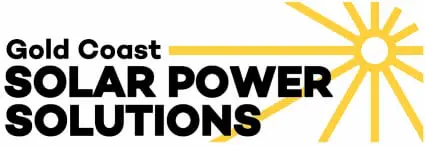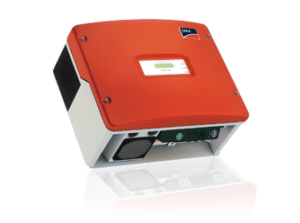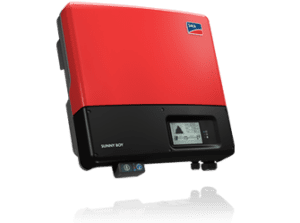At Gold Coast Solar Power Solutions we understand that a solar power system is a major investment – how do you ensure that this investment doesn’t turn out to be a lemon? The main components that you are paying for are the solar panels and the solar power inverter, but what makes good solar power inverters? Well there are many things to consider, as you will see.
Transformer or Transformerless Solar Power Inverters?
Solar power inverters need to take a constantly changing voltage from the solar panels and change it to the the same voltage as used in the local power grid, around 240V. Originally this was always achieved through a transformer inside the inverter, but with advances in technology this can now be accomplished efficiently electronically, hence the transformerless inverter. Both inverters have pros and cons;
Solar Power Inverters with transformers
- Pro: The windings in the transformer are a physical gap between the DC voltage from the solar panels and the AC voltage from the grid. This means the DC and AC voltage cannot possibly be leaked into each other, a great safety feature.
- Con: Transformers tend to be very heavy.
- Con: Transformers tend to have slightly higher losses than transformerless inverters; therefore the efficiency of a transformer inverter is usually slightly less than a transformerless model.
- Con: Transformers can produce a slight humming noise when in operation.
Transformerless Solar Power Inverters
- Pro: Slightly more efficient than solar power inverters with transformers
- Pro: Quite light compared to solar power inverters with transformers
- Con: DC and AC voltage is not physically seperated, so in a fault condition the different voltages could potentially cross. (Quality transformerless inverters such as SMA and Aurora inverters have built in protection to ensure this can never happen)
- Con: Some transformerless solar power inverters can develop a high frequency noise when in operation.
- Con: Due to transformerless inverters not having any physical seperation between AC and DC power if the solar panels are not at the same potential as earth the panels can produce an electric shock whilst in operation. Australian standards state that all solar power panels connected to a transformerless inverter must therefore be earthed. The potential electric shock is not lethal but due to the location of the solar panels any shock received can have lethal consequences in regards to the potential of a fall from a roof. If you have a transformerless inverter make sure that your panels are earthed to Australian Standards!
What size solar power inverter do you need?
The answer to this question depends on what you want to achieve. The following points need to be taken into consideration;
-
- What is your budget? A larger solar power inverter will always cost more.
- Is there a maximum inverter size for the government rebates? In QLD a 5kw inverter is the largest that you can go and make use of the higher net feed in tariff.
- What size system are you wanting to install? Obviously the inverter should be sized to handle the amount of power your solar panels will output.
- Are you planning to add to the system in the future?
* If so will you be able to get the same solar panels? Technology quickly changes and it is important that any additional solar panels have very similar electrical characteristics – unless a dual maximum power point inverter is used – more on that to follow.
* Do you have enough roof space for additional panels?
Dual Maximum Power Point Solar Power Inverters
The dual maximum power point tracking inverter is a relatively new kid on the inverter scene, but it certainly has earnt its place in the world! Solar power inverters are constantly monitoring the power being outputted from the solar panels and calculating how it can turn this into as much usable power as possible, but to do this well it requires every solar panel to be performing the same. If one solar panel is in shade, at a different tilt to the sun or has different electrical characteristics this will be detrimental to the overall systems performance as the system will always be pulled down by it’s weakest link. Dual maximum power point solar power inverters have the great benefit of two separate maximum power point trackers; what this means is that the inverter can have two totally separate inputs and monitor each one separately, constantly maximizing the input of each separate input. This is perfect for the following situations:
- Not enough North roof? Utilise available North roof and then install the rest of the panels on the next roof closest to North.
- Want to add solar panels in a few years time? Install solar panels now into one input leaving the other input spare for future technology which will most likely have different electrical characteristics to the solar panels you install now.
- An area of your roof is affected by shading at certain times? Have this section wired into a seperate input so that it does not affect the output of your whole solar power system.
Things to look for in solar power inverters
- Is the inverter weatherproof? Should it be for the location where it is to be installed?
- Does it comply with the Australian Standard AS4777? Click here for a list of AS4777 approved inverters.
- Does the display provide information that you are after? Inverters can display information such as daily output, power being generated right now, power generated since it was installed, hours of operation, etc. Some inverters do have the capability to output data to computers via data cables, wifi or bluetooth. If this is an important feature to you then obviously ensure the solar power inverter you are considering has the desired function BEFORE you sign any contracts!
- Is the solar power inverter manufacturer a reputable company? A good way to find out is to see what other people are saying about the inverter through internet forums and the like. Unbiased opinions are always the best.
- Does the inverter manufacturer have an office in Australia if you should have any warranty issues or would you have to deal with a person in China?
- What length is the warranty? 5 years is pretty standard, 10 year warranty extensions can usually be provided on request.
- What is the inverters efficiency? This data should be provided on the inverters specification sheet. The efficiency should always be higher than 90%, generally the larger the solar power system the more efficient the inverter. As mentioned earlier transformerless solar power inverters are usually slightly more efficient than inverters with a transformer.
Okay, so as can be seen with all the above there is a lot to look out for with solar power inverters! A good rule of thumb is to stick to a reputable manufacturer, as the products they offer will be of great quality. Remember that the solar power inverter is the area that you are most likely to have issues with in your solar power system as the inverter is the heart of your solar power system – not too much can go wrong with the rest of the system if it is well installed in the first place and quality panels and framing is used. At Gold Coast Solar Power Solutions our inverters of choice are SMA and Fronius, but don’t just go off our opinion, see what the rest of the world has to say!



Sorry to hear of your issues Ahmed, that’s terrible!
Thank U v.much for the valuable informations U offered .. i had a bad expierence with a chinese solar inverter being selled here in Iraq via a fake warranty .😕😕
Eng.Ahmed